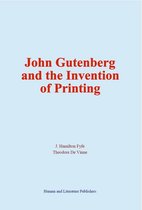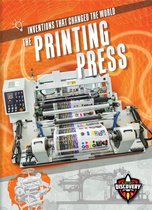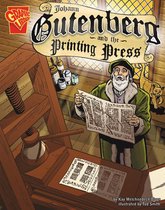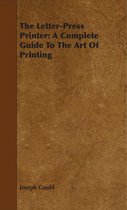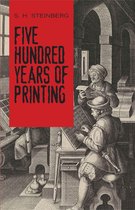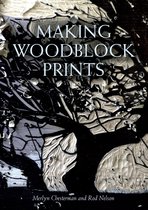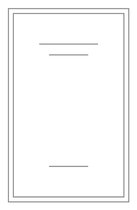A Short History of the Printing Press and of the Improvements in Printing Machinery from the Time of Gutenberg up to the Present Day Ebook Tooltip Ebooks kunnen worden gelezen op uw computer en op daarvoor geschikte e-readers.
Afbeeldingen
Sla de afbeeldingen overArtikel vergelijken
Samenvatting
About the year 1450, Gutenberg was engaged in printing his first book from movable types. No method of taking the impressions simpler than that employed by him can be imagined, unless it be with a “buffer,” or by means of a brush rubbed over the paper laid upon the “form” of type, after the manner of the Chinese in printing from engraved blocks. His printing press consisted of two upright timbers, with cross pieces of wood to stay them together at the top and bottom. There were also intermediate cross timbers, one of which supported the flat “bed” upon which the type was placed, and through another a wooden screw passed, its lower point resting on the centre of a wooden “platen,” which was thus screwed down upon the type. After inking the form with a ball of leather stuffed with wool, the printer spread the paper over it, laying a piece of blanket upon the paper to soften the impression of the platen and remove inequalities. This was the machine which Gutenberg used. The mechanical principle embodied in it was found in the old cheese and linen presses ordinarily seen in the houses of medieval times. Were Gutenberg called upon to print his Bible to-day he would find virtually the same type ready for his purpose as that made by him, no change having taken place in its general conformation; but he would be bewildered in the maze of printing machinery of the beginning of the twentieth century. The simple form of wooden press, worked with a screw by means of a movable bar, continued in use for about one hundred and fifty years, or until the early part of the seventeenth century, without any material change. The forms of type were placed upon the same wooden and sometimes stone beds, incased in frames called “coffins,” moved in and out laboriously by hand, and after each impression the platen had to be screwed up with the bar so that the paper which had been printed upon it might be removed and hung up to dry.
Productspecificaties
Inhoud
- Taal
- en
- Bindwijze
- E-book
- Oorspronkelijke releasedatum
- 16 maart 2020
- Ebook Formaat
- Adobe ePub
Betrokkenen
- Hoofdauteur
- Robert Hoe
- Hoofduitgeverij
- Library Of Alexandria
Lees mogelijkheden
- Lees dit ebook op
- Android (smartphone en tablet) | Kobo e-reader | Desktop (Mac en Windows) | iOS (smartphone en tablet) | Windows (smartphone en tablet)
Overige kenmerken
- Studieboek
- Nee
EAN
- EAN
- 9781465650290
Je vindt dit artikel in
- Categorieën
- Taal
- Engels
- Boek, ebook of luisterboek?
- Ebook
- Beschikbaar in Kobo Plus
- Beschikbaar in Kobo Plus
- Beschikbaarheid
- Leverbaar
Kies gewenste uitvoering
Prijsinformatie en bestellen
De prijs van dit product is 4 euro en 99 cent.- E-book is direct beschikbaar na aankoop
- E-books lezen is voordelig
- Dag en nacht klantenservice
- Veilig betalen
Rapporteer dit artikel
Je wilt melding doen van illegale inhoud over dit artikel:
- Ik wil melding doen als klant
- Ik wil melding doen als autoriteit of trusted flagger
- Ik wil melding doen als partner
- Ik wil melding doen als merkhouder
Geen klant, autoriteit, trusted flagger, merkhouder of partner? Gebruik dan onderstaande link om melding te doen.
